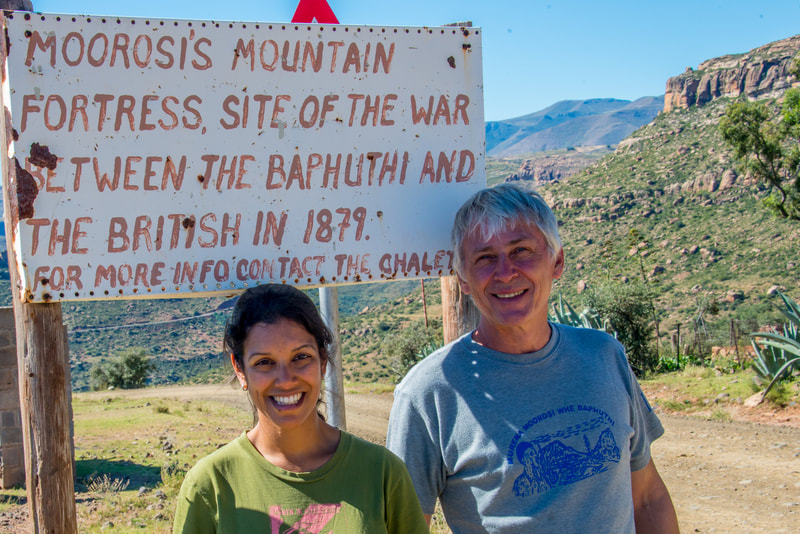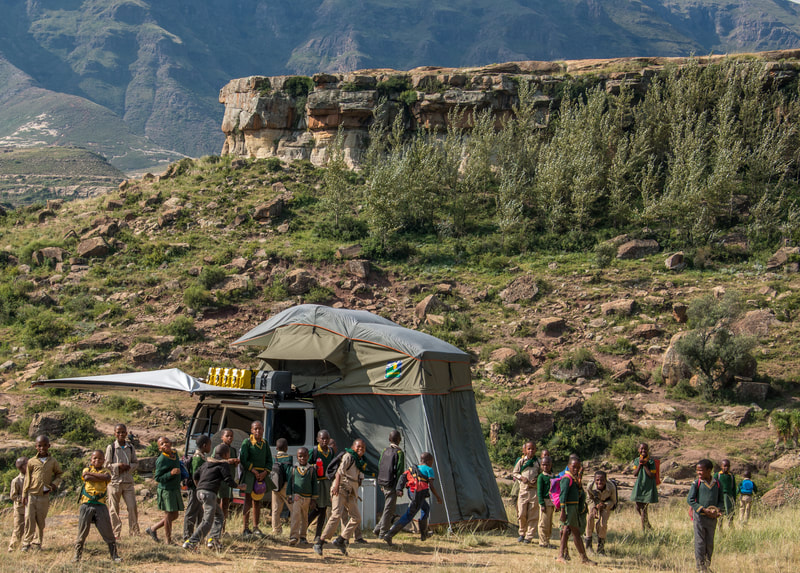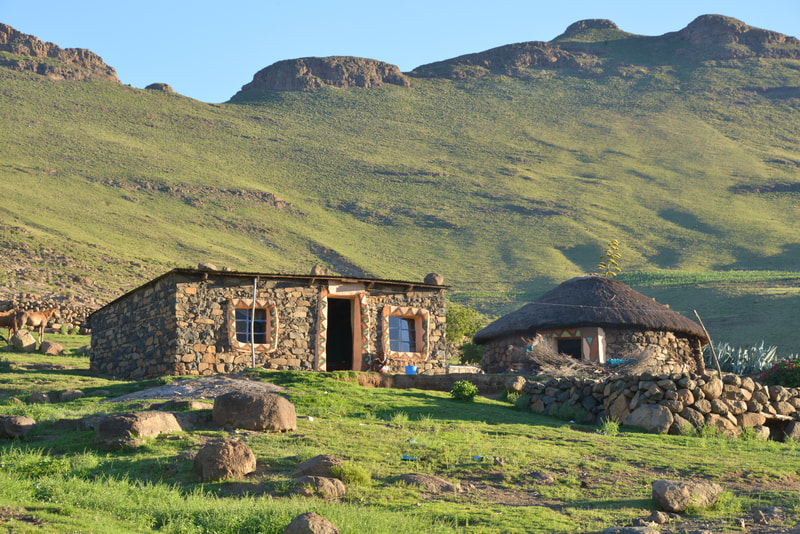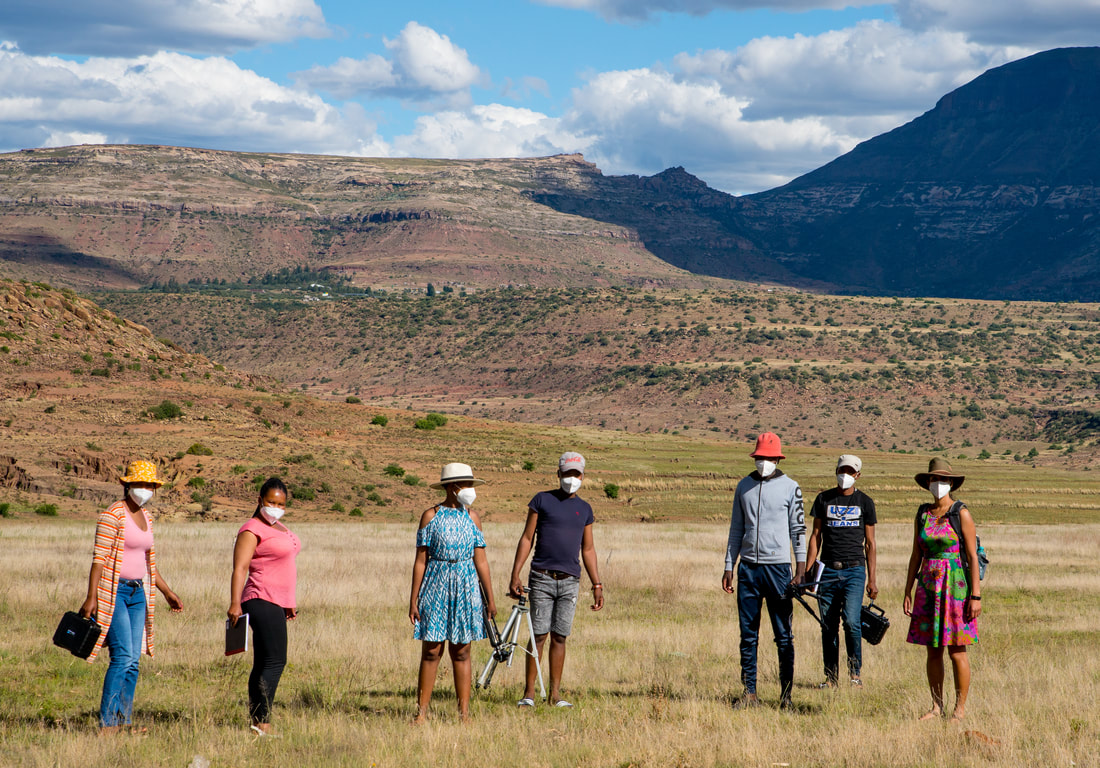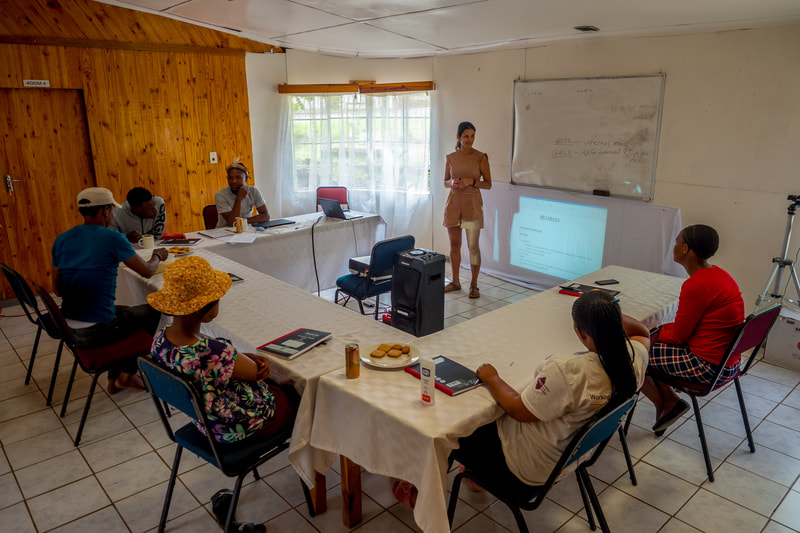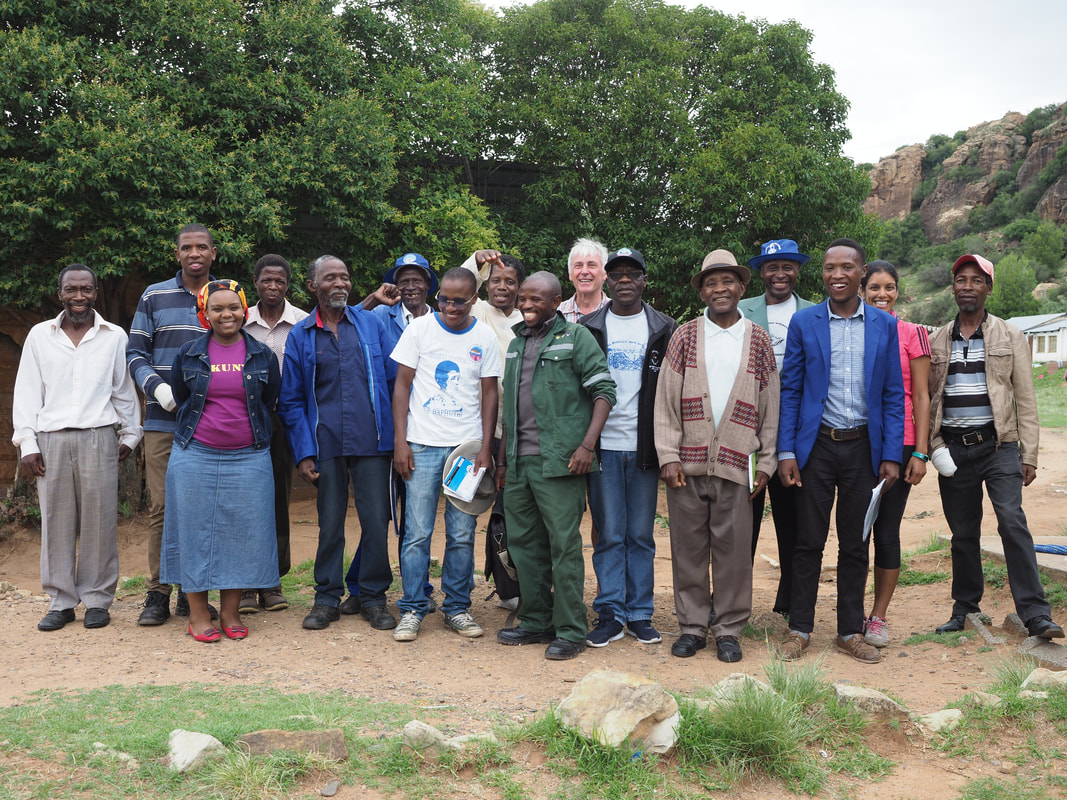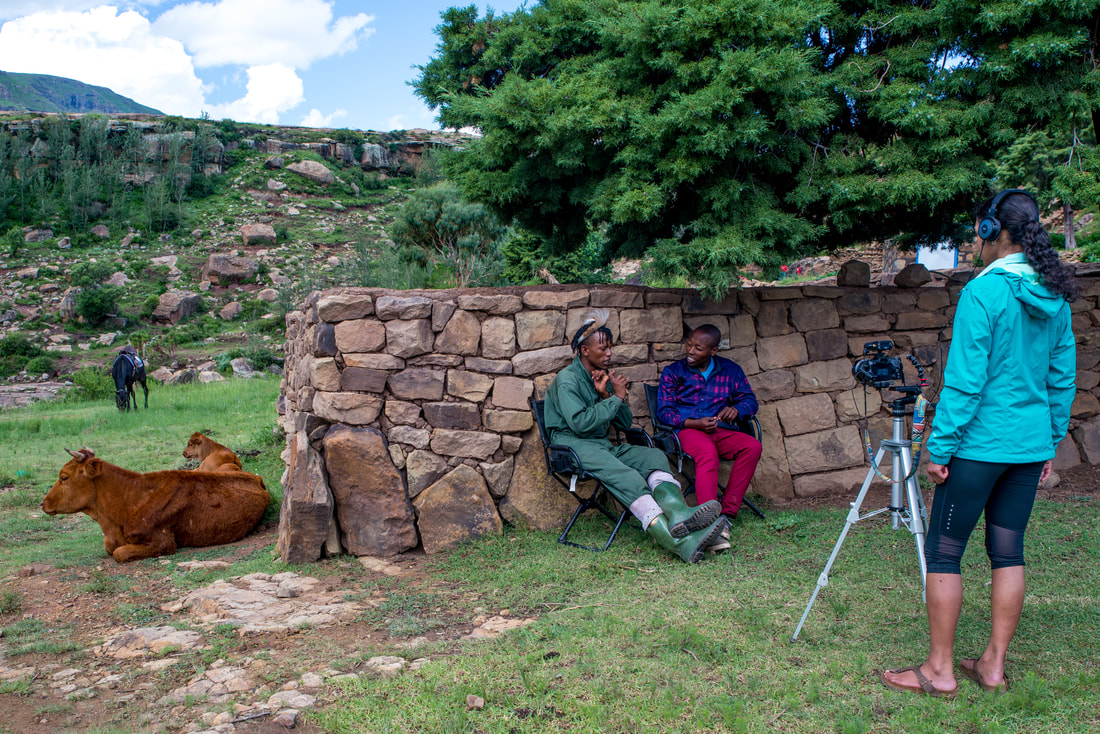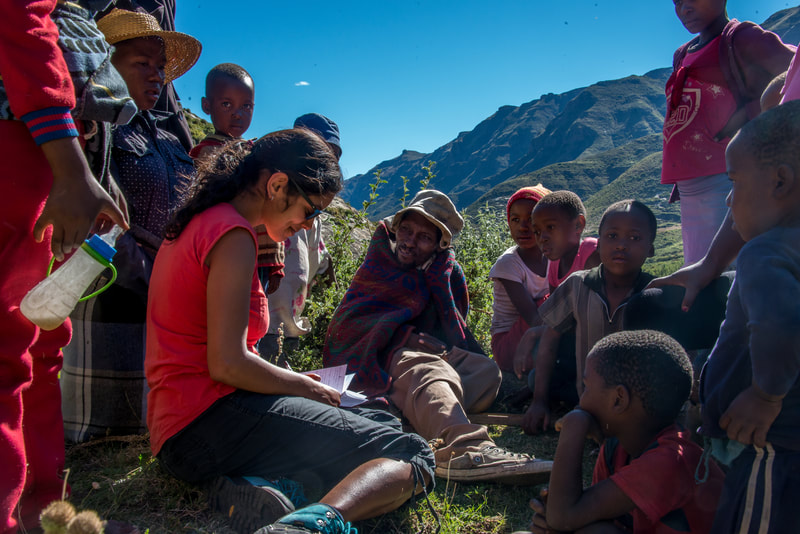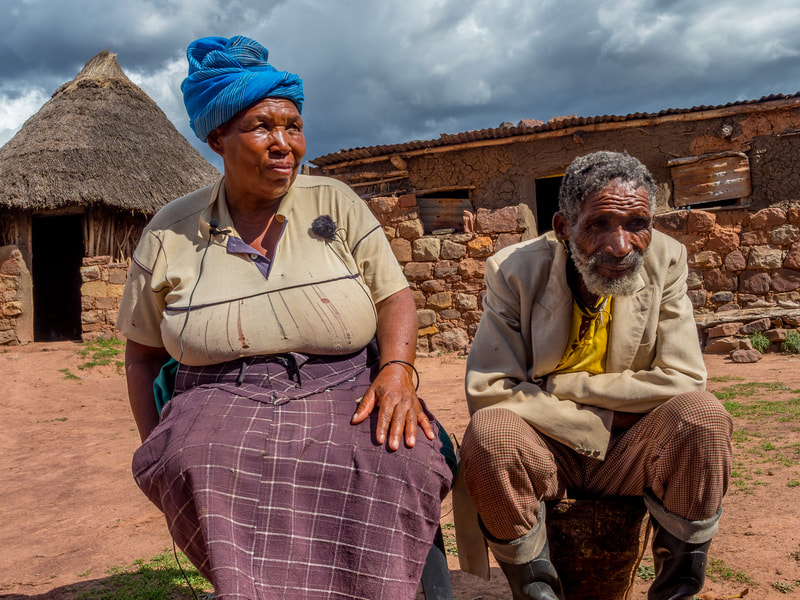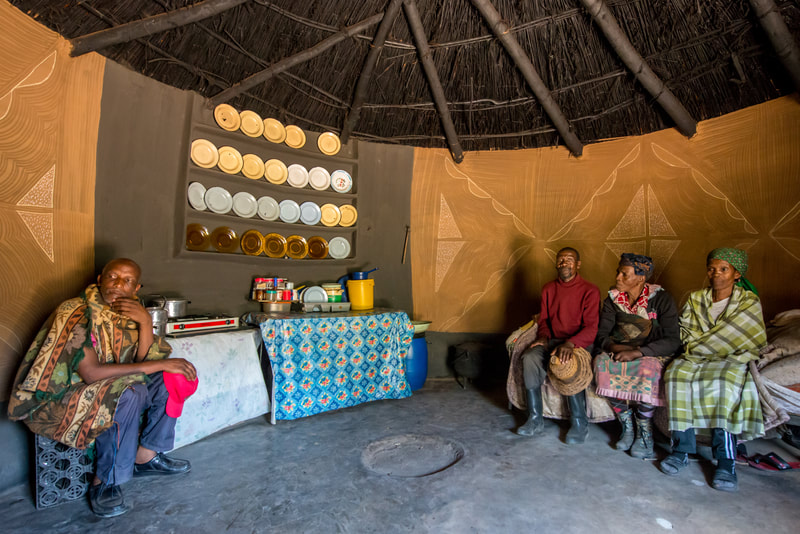The siPhuthi language and its speakers
SiPhuthi is spoken by several thousand ebaPhuthi, most of whom reside in southern Lesotho. Some speakers are also found in the Eastern Cape province of South Africa. SiPhuthi, together with siSwati and siBhaca, is classified as an Nguni language of the Tekela branch and is therefore a South-Eastern Bantu language. Since ebaPhuthi have been in contact with Basotho for several hundred years, siPhuthi shares many linguistic features with Sesotho, a Sotho-Tswana language.
The ebaPhuthi (Phuthi people) were among the first Bantu-speaking people to arrive in present-day Lesotho, where they came in contact and intermarried with the autochthone hunter-gatherer communities of southern Africa, commonly referred to as San. The Phuthi nation was formed in the early nineteenth century and consolidated under the leadership of their king, Murena Moorosi. November 19, 1879 is the decisive date in Phuthi history; on that date, the British—supported by the Basotho (Sotho people), who still constitute the ruling majority in Lesotho today—ended an eight-month siege by storming the fortress at Tshaba Moorosi (King 2019). Murena Moorosi lost his life at the battlefield and his subjects were subsequently dispersed and deprived of their leadership. Since this historic date, the ebaPhuthi have been colonized by the Basotho, who continue to this day to designate chiefs from their own ranks to head the ebaPhuthi in their settlements. (Shah, Kometsi & Brenzinger 2022)
Children speaking siPhuthi as their first language are found in two river valleys only, namely Daliwe and Sinxondo. However, even in these two valleys, siPhuthi tends to be abandoned in the home environment when ebaPhuthi marry Basotho or amaXhosa. In these mixed families, children grow up with Sesotho or isiXhosa as their home language. Due to the small number of speakers and widely dispersed settlements, siPhuthi is threatened by the nationally dominant language, Sesotho.
Most ebaPhuthi live in rural areas in Quthing and Qacha’s Nek, the most marginalised and least developed districts of Lesotho. Boys are expected to herd livestock and girls to contribute to domestic work and childcare, which results in low enrollment and high dropout rates. The fact that teachers do not speak siPhuthi and many students do not speak Sesotho when they enter school creates communication barriers which leads to low performance of these students.
|
Living conditions of ebaPhuthi are challenged by poor infrastructures, with no access to running water, health services and electricity. Bad road conditions result in expensive passenger fares and high prices for basic supplies in the remote areas. There are few job opportunities and the majority of the ebaPhuthi survive as herders and subsistence farmers. For many, migration work is the only way to generate cash income and improve the living conditions of their families. EbaPhuthi therefore leave for South Africa to work in seasonal farm jobs, such as fruit-picking and sheep shearing. Men often spend decades away from their families working in South African mines and many return with serious health problems, such as blindness, lung diseases, etc.
|
Official recognition of siPhuthi and ebaPhuthi
SiPhuthi is not yet recognised, but an amendment to the Constitution of Lesotho is currently awaiting approval. If passed, siPhuthi would be together with English, Sesotho and isiXhosa one of the four official languages of the Kingdom. In South Africa, siPhuthi is not among the eleven official languages, but benefits from being protected under the Bill of Rights as one of the languages spoken by South African citizens.
In Lesotho, the ebaPhuthi remain to be culturally, politically and socio-economically dominated by the Basotho majority and with no Phuthi paramount chiefs, they still lack political recognition. By contrast, the ebaPhuthi in South Africa have officially recognised chiefs and the current Murena Kutloano Letuka, with his praise name Vutshemalagabi (“burning flames”), is the 5th chief in succession.
Collaborators on the project
The beginning of the siPhuthi documentation and revitalisation project goes back to 2016 when I, together with Matthias Brenzinger, travelled to Lesotho and met with siPhuthi speakers for the first time. The collaborative project involves numerous speakers of different ages from all siPhuthi-speaking areas. Read more about our collaborative approach in this short paper.
|
We strongly believe that speakers should have agency to decide on how and by whom their languages are being documented and for that reason, we facilitate workshops in which community members are trained in language documentation methods and techniques. Our main collaborators in Lesotho are Letzadzo Kometsi, Nteboheng Lesia, Malillo Mpapa, Maseeiso Nkuebe, Malebela Qaoka, Ayanda Potsane, Nzuzo Potsane, Lebuajoang Ramokhele, Mats’eliso Tsekoa. Read more about one of our training workshops in this blog post.
|
SiPhuthi documentation and revitalisation
More recently, with an increasing number of ebaPhuthi in Lesotho and South Africa regaining language competence, the decline of siPhuthi seems to have at least partially come to a halt. These new siPhuthi speakers consider their heritage language to be a key marker of their Phuthi identity.
Having assimilated to the dominant Basotho culture, ebaPhuthi have lost most of their other cultural heritage but their language siPhuthi. The establishment of siPhuthi as a key marker of a distinct Phuthi identity has been gaining momentum during the last decade thanks to Libadla le Baphuthi, a cultural association that is the driving force behind many siPhuthi-related initiatives and activities. ... Libadla le Baphuthi is fostering the revitalization of siPhuthi in those settlement areas where it is losing ground and its resuscitation in areas where it is already lost. (Shah, Kometsi & Brenzinger 2022) |
|
The documentation of siPhuthi is vital for the language revitalisation activities carried out by the community. Together with ebaPhuthi, we are compiling a multimodal corpus of siPhuthi recordings, which contains narratives, conversations, interviews, folktales, oral histories and poems. The audio and video recordings are transcribed, translated and annotated. The corpus covers a wide range of topics and includes recordings from a large number of speakers from different generations and geographic locations. The siPhuthi corpus is developed to serve as a resource for community members as well as academics from various disciplines. Click to access the corpus.
|
Most project activities are contributing to the production of a quadrilingual siPhuthi-Sesotho-isiXhosa-English dictionary, which will be crucial for the development of siPhuthi teaching and learning tools. We are also supporting the production of materials in siPhuthi, such as COVID health awareness posters.
|
In September 2022, the first book in siPhuthi was published! Likhosana, the siPhuthi translation of “The Little Prince”, is the beginning of an envisaged siPhuthi library. The slideshow on the right shows Letzadzo Kometsi, the translator of Likhosana, with the printed copy of his book. The book has been published by Edition Tintenfaß.
|
|
Funding
We are grateful for financial support from the following institutions and organisations: Endangered Languages Documentation Programme, South African Centre for Digital Language Resources, Alexander von Humboldt Foundation, The Firebird Foundation for Anthropological Research, Linguapax International, Gesellschaft für bedrohte Sprachen and SOAS University of London.



